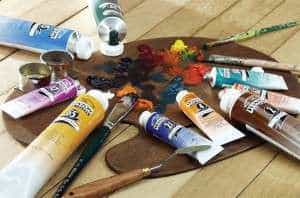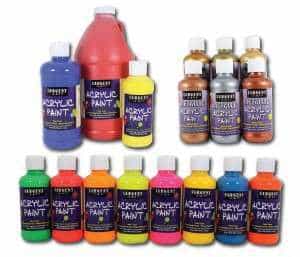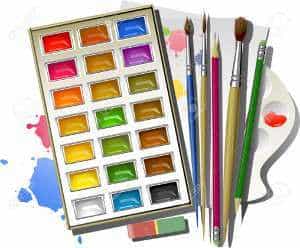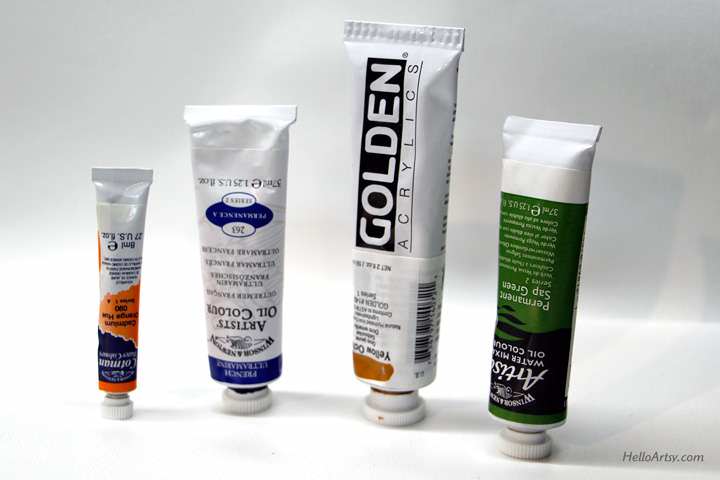There are three main painting mediums – oils, acrylics and watercolours – and each has its own advantages and disadvantages.

OIL
Used by all of the great masters, oil painting dates back to the 14th century and has been championed ever since thanks to its rich, glossy appearance and it’s longevity and durability.Oil paints are made by mixing raw pigment with oil binders, including linseed oil, poppy oil and walnut oil. You can have a go at making your own oils with raw pigment but this requires both practise and patience. Oils can be mixed with various mediums, including alkyd resins, wax or turps, in order to create a smoother texture or thinner consistency. Oils dry very slowly which means they can be worked on for long periods of time.
ACRYLIC

Acrylic paints are relatively new: first developed in the 1950s, they became instantly popular with Pop Artists, such as Andy Warhol and Sir Peter Blake. Acrylics handle in a similar way to oils but they are water-based, meaning they can be applied in thin layers or thick impasto. They dry relatively quickly, although there are plenty of additives available that can be mixed with your colours to extend the ‘open’ time of the paint. Pastes and gels can also be bought to alter the surface texture of your finished painting.
WATERCOLOUR

Watercolour is one of the oldest painting mediums. A version of it was first used in cave paintings and it became a popular artistic medium during the Italian Renaissance. Watercolours either come in small, hard cubes known as ‘pans’ or squeezable tubes. To work with it, the colour is diluted with water – you can choose between heavily diluted paint to create large, faint washes of colour, or a mix with less water for a stronger, more potent effect.
CHOOSING THE RIGHT PAINT
For absolute beginners, acrylic is the easiest medium with which to gain confidence. The paint is opaque, meaning you can paint over mistakes – great when you’re starting out. The hardest medium to master is watercolour. This is because, aside from planning, the artist has little control over what will happen as the paint goes into the paper, although the painter can guide it, the watercolour mixture has a life of its own.
All paint comes in either student or artist grades. Artists’ quality paints will contain high levels of pigment and produce stronger colours. Typically, there will be more colours to choose from within the range and the colour will not change much after it dries – although, unsurprisingly, this all comes at a cost! Student quality paint is more affordable, but has lower levels of pigment and the colour shift is greater once the paint has dried.


